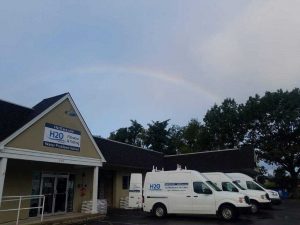Water softener service is normally recommended annually as it is for most other water filtration equipment. These systems process thousands of gallons of water per month and remove significant amounts of minerals and contaminants. Consistent water softener service will significantly decrease the need for more expensive water softener repairs in the future. It is possible to have interim operational problems (identified later in this report) which can potentially be diagnosed and remedied by the homeowner.
There are various brands of water softeners, some more efficient than others in terms of water usage and salt requirements. Some models are capable of softening or conditioning larger volumes of water, therefore estimating water usage prior to selecting a system is important. For higher levels of iron and/or manganese, an up-flow water softener (versus down-flow) is highly recommended to avoid damaging mineral build-up at the bottom of the tank. To ensure proper operation and to maximize the useful life of your equipment, proper water softener service or maintenance will provide consistently softened or conditioned water to your home and reduce the chances of needing a water softener repair. For complicated problems, contacting your water treatment service technician is your best option. See some symptoms of potential problems with your water softener below.

High Efficiency Water Softener
IF WATER SOFTENER NOT WORKING, CHECK THESE:
Sounds simplistic, but make sure the water softener is “on” and working, that is, that the system has power. After that:
- Check inside the salt tank: Is there salt in the brine tank? If not, add at least a few bags of salt to the tank.
- Check for power to the softener: If the unit uses electricity to run a timer, be sure it’s plugged in to a live outlet and has power. Some water conditioners use a low-voltage transformer to power the control – be sure that device is present, plugged in, and working. Also, a power failure could cause the timer to be improperly set. Re-set the day of week and time of day on the water softener timer after an electrical power failure or after the softener has been powered “off” for a time.
- Check the water softener bypass valve: You want first to see that the water softener is not on “bypass” – is household water flowing through the unit? This valve is an option and may not be installed on your unit, but there may be standard plumbing valves or globe valves that accomplish the same purpose.
- Manual regeneration cycle: Then try a manual regeneration cycle – you’ll see on most units a lever you can push on the control box to start that regeneration process. Note: your home will not be delivered conditioned or softened water while the water softener is in the regeneration cycle, therefore, its best not to use water (or use as little as possible- flushing toilets is OK, etc.) in the home until the regeneration process is complete. This is why most programmed regeneration is set for late at night when water usage is much less likely.
- Feel & test the water supply: if you can’t get a lather when bathing the system may not be sufficiently treating the water.



